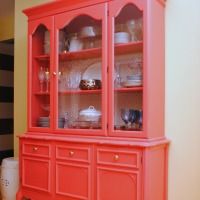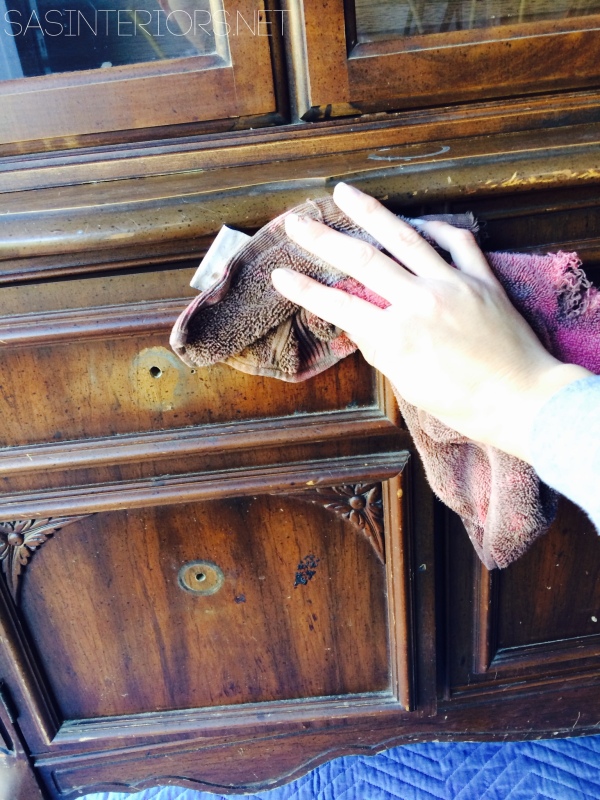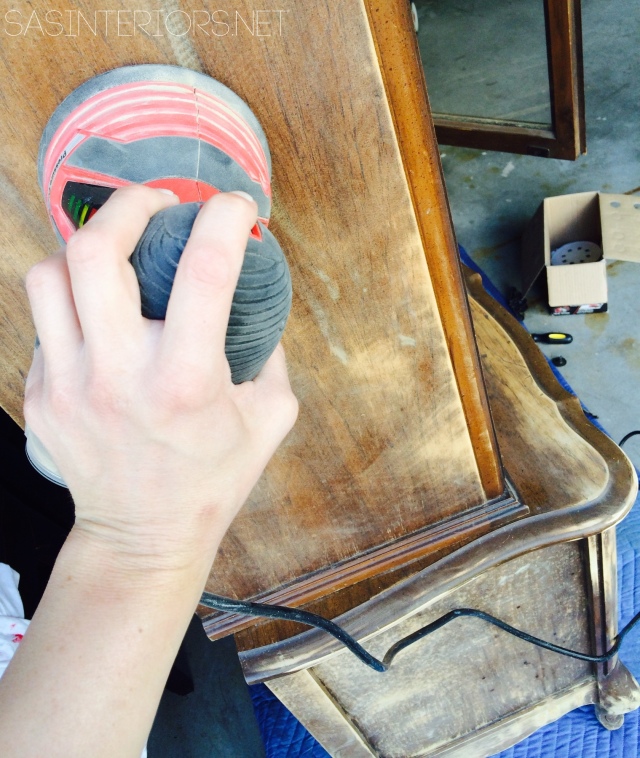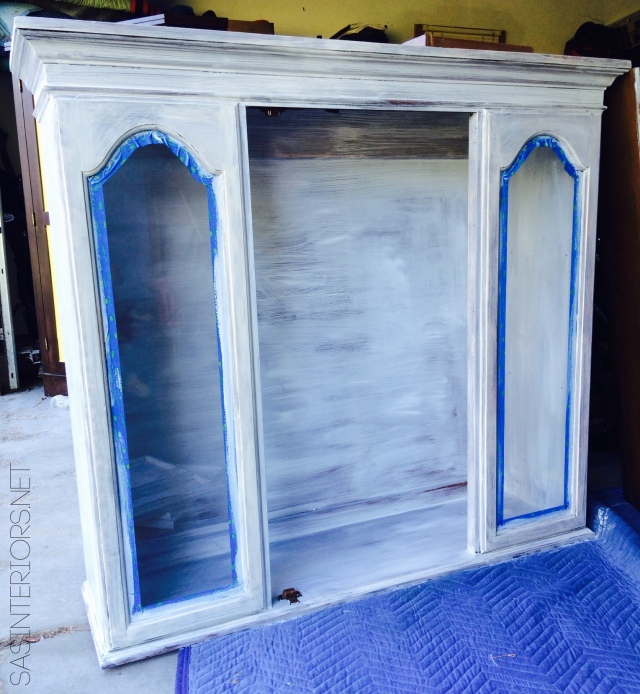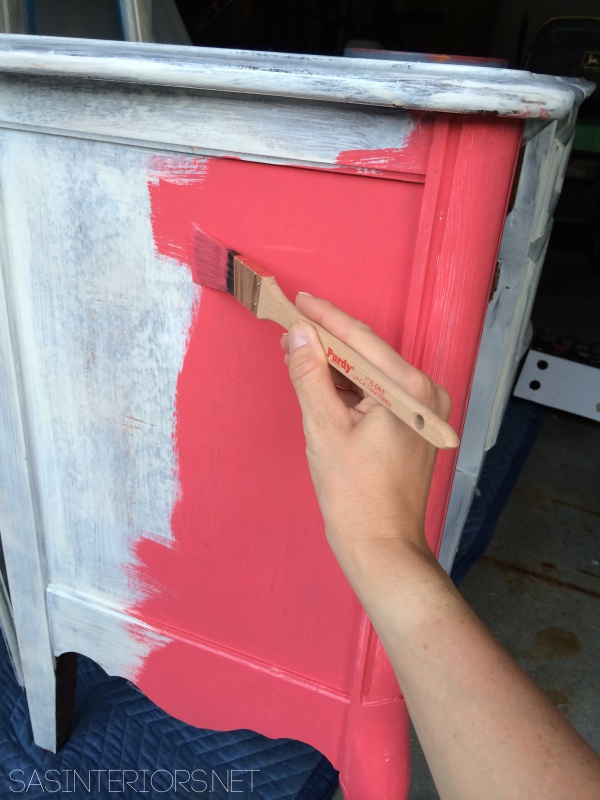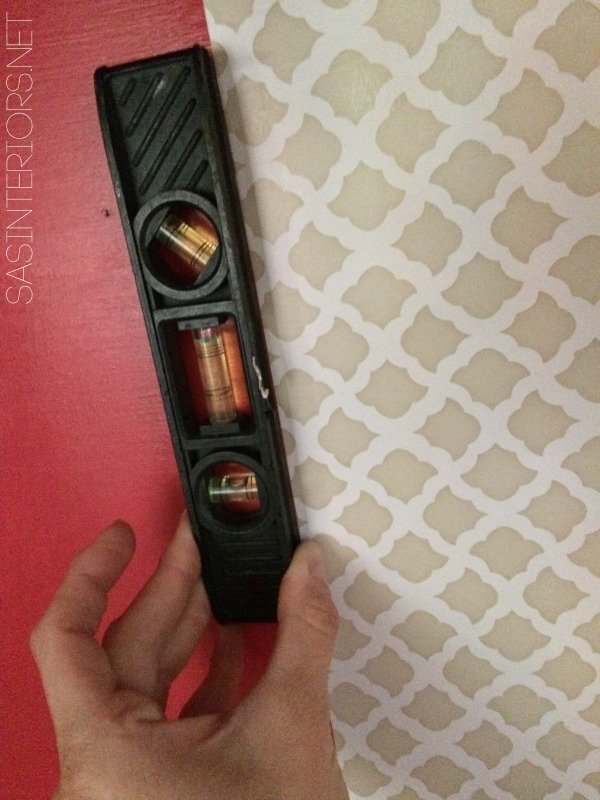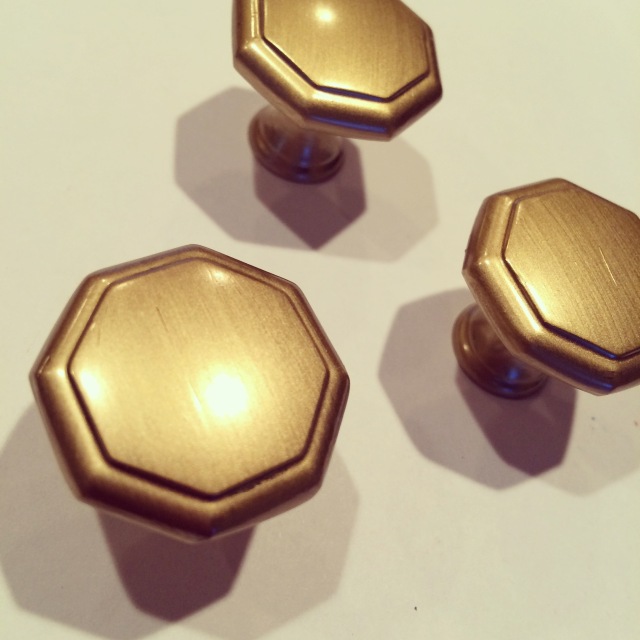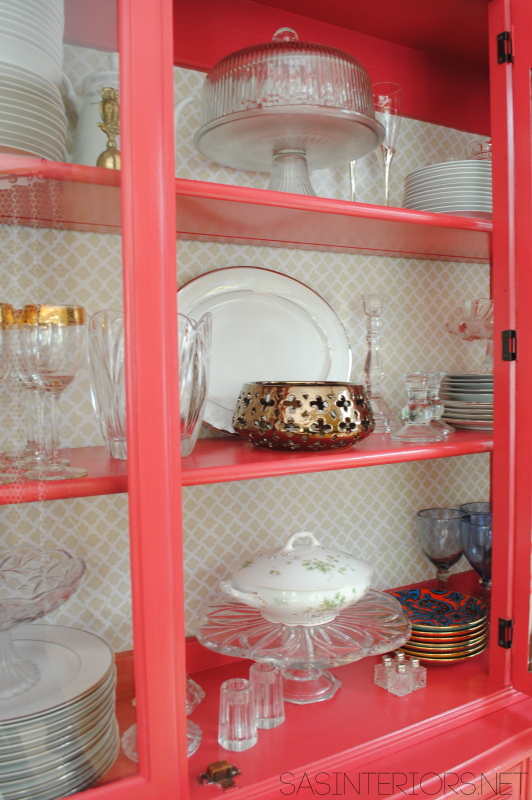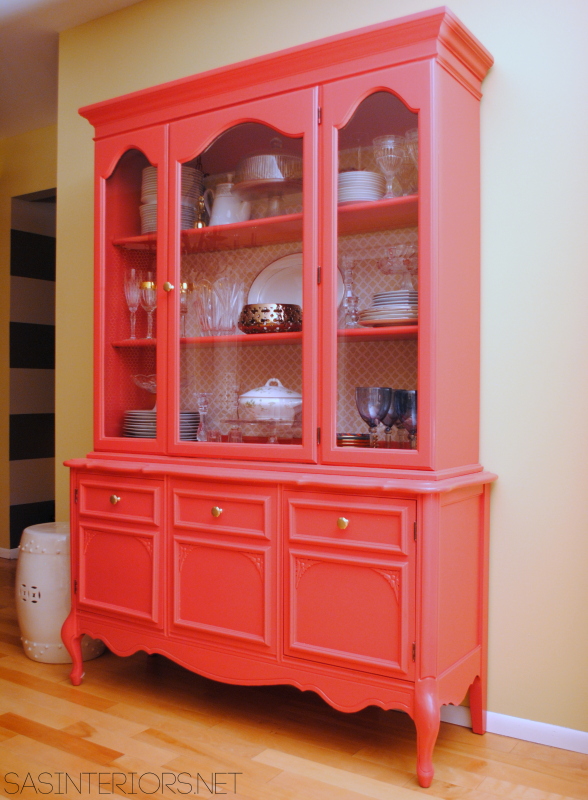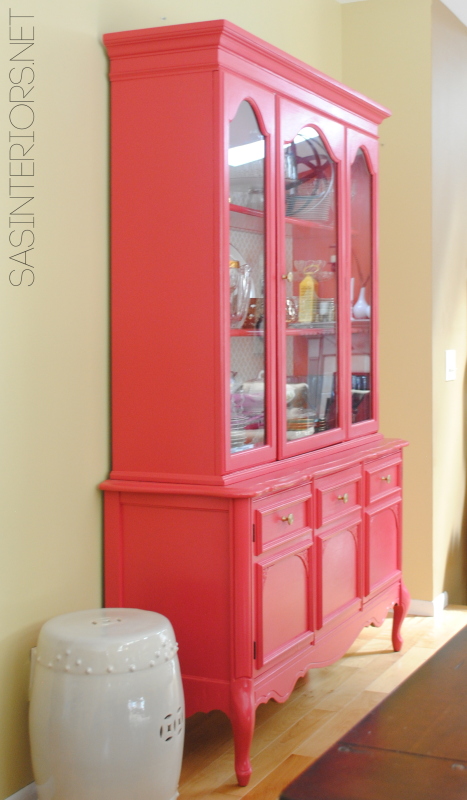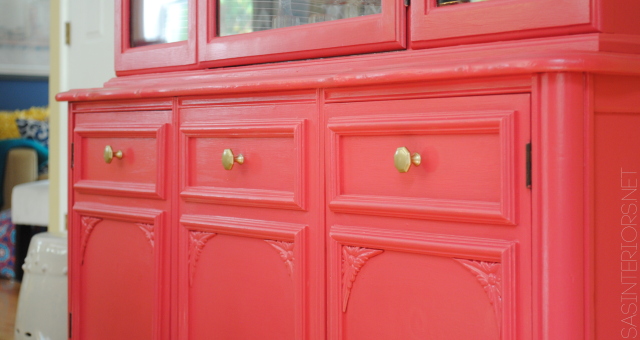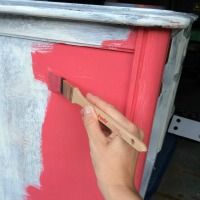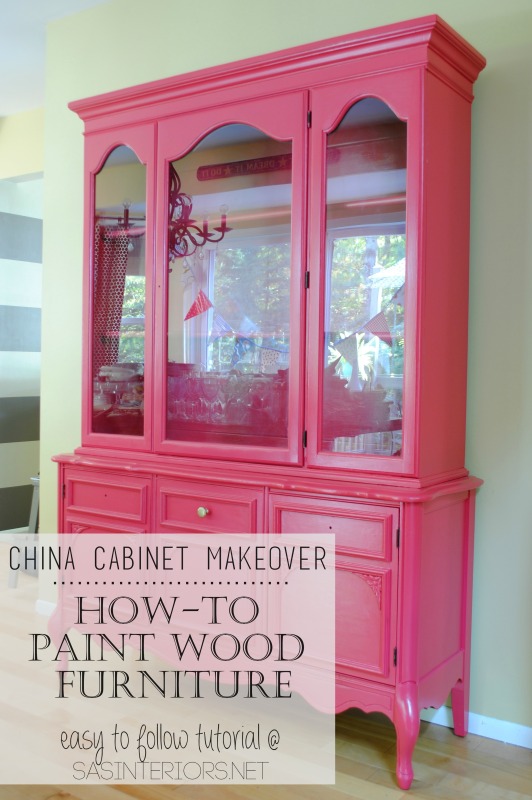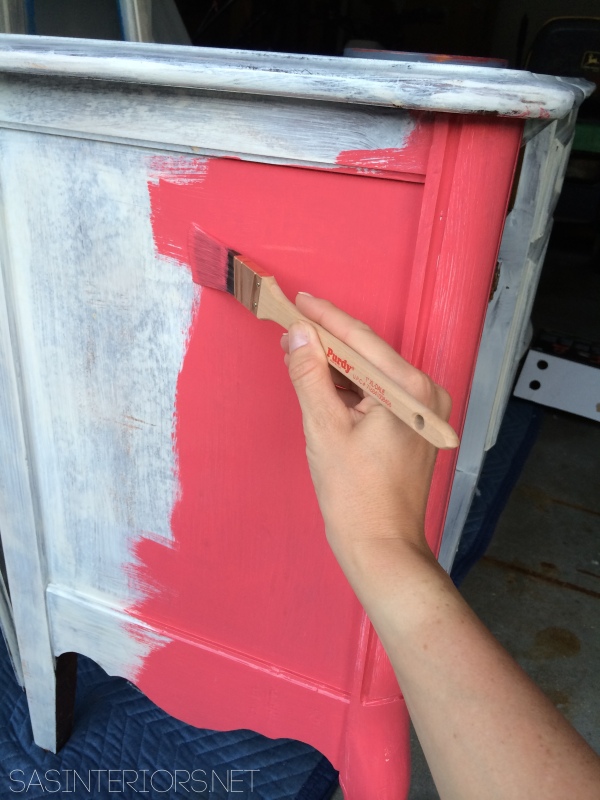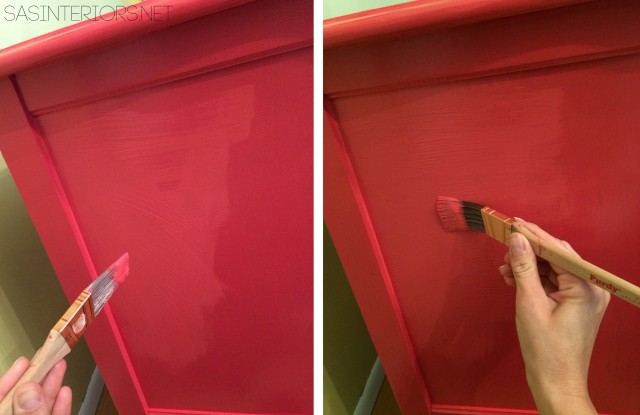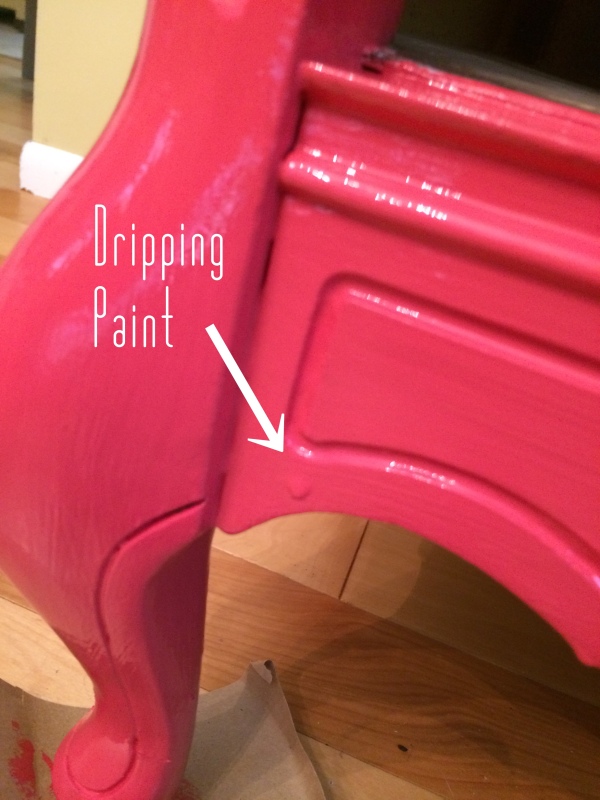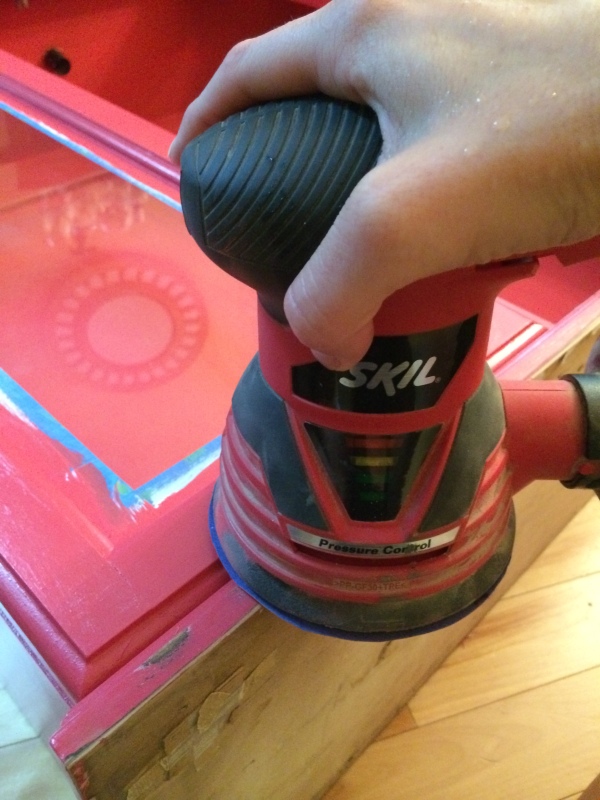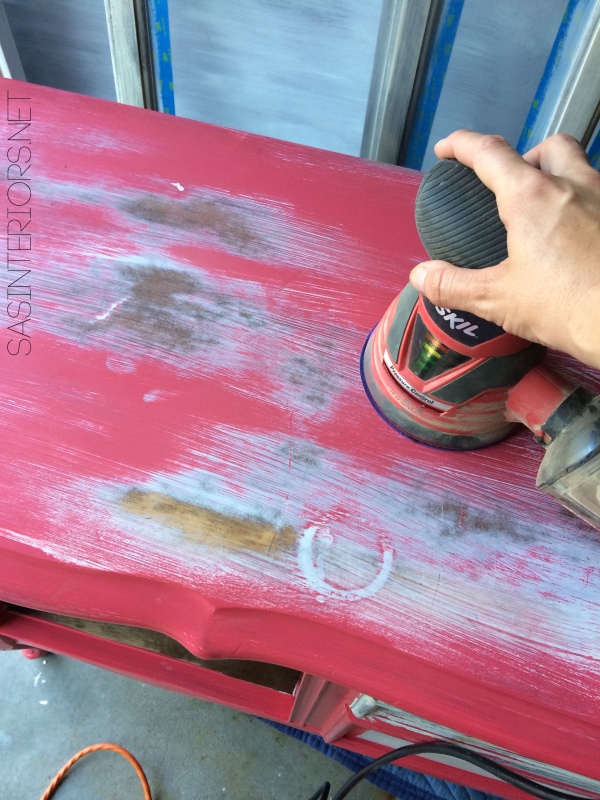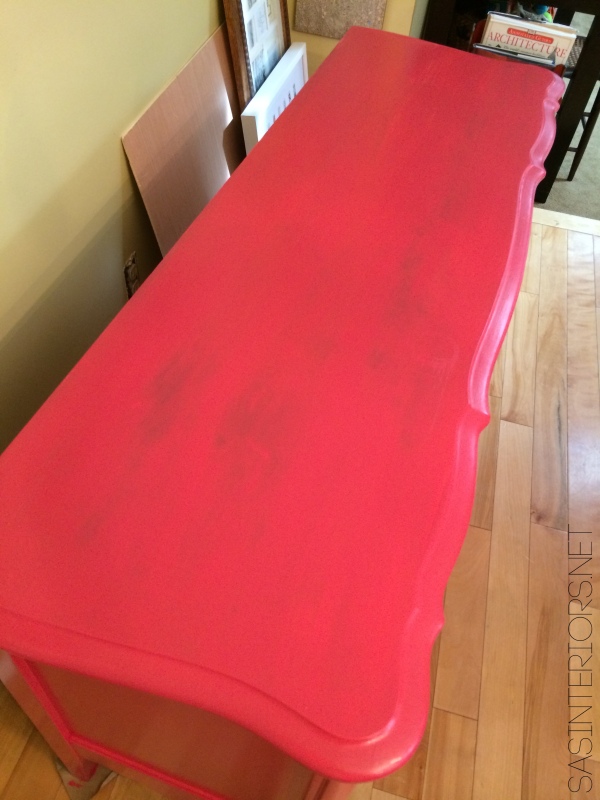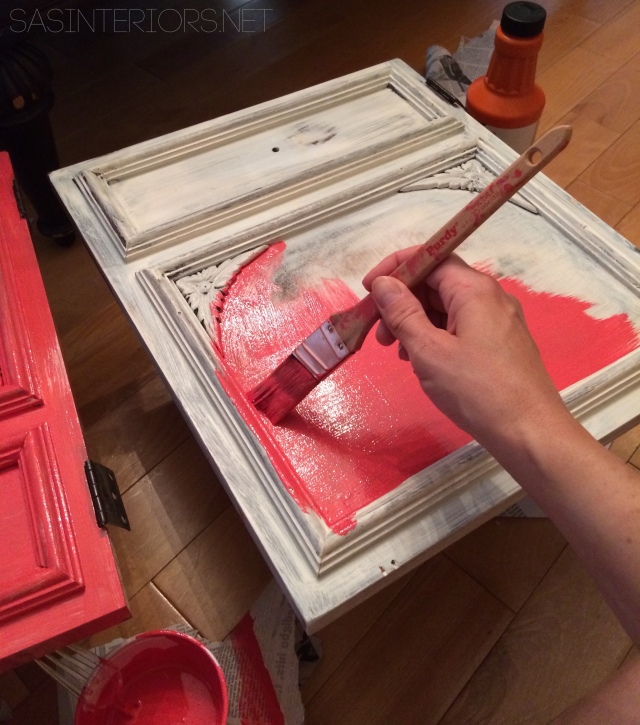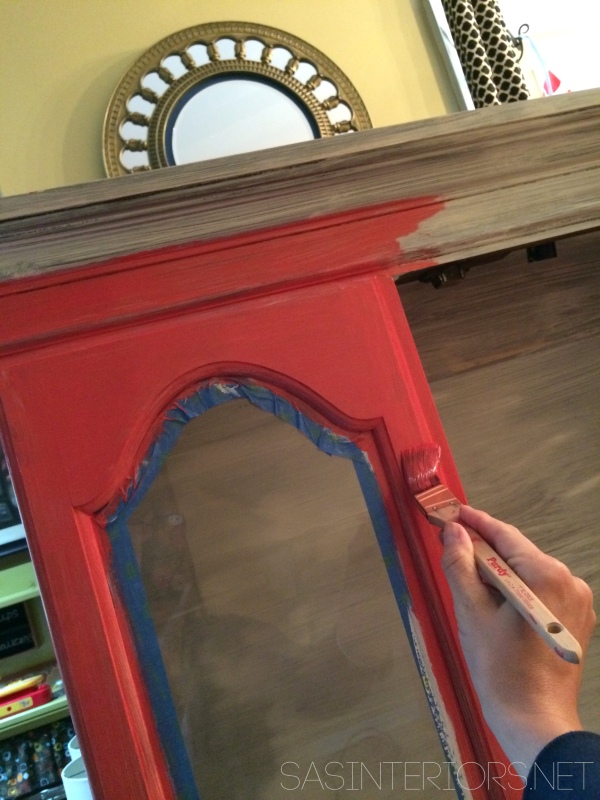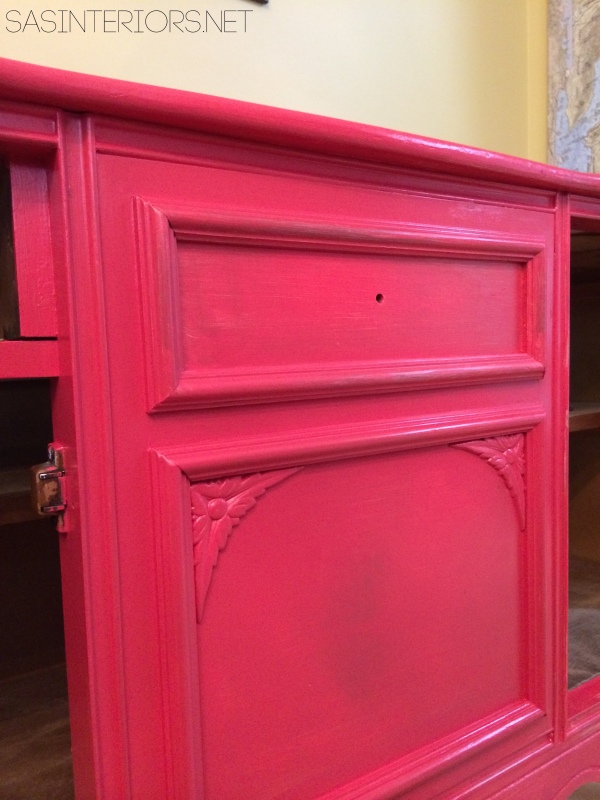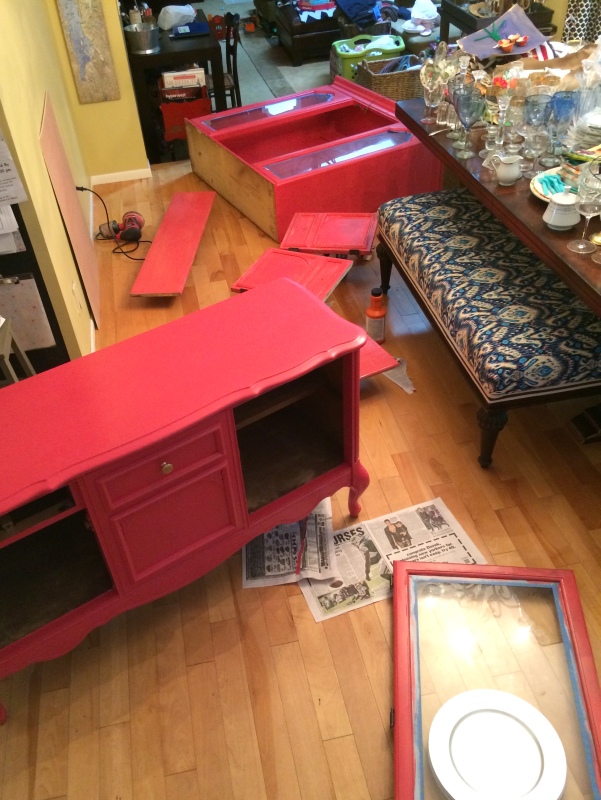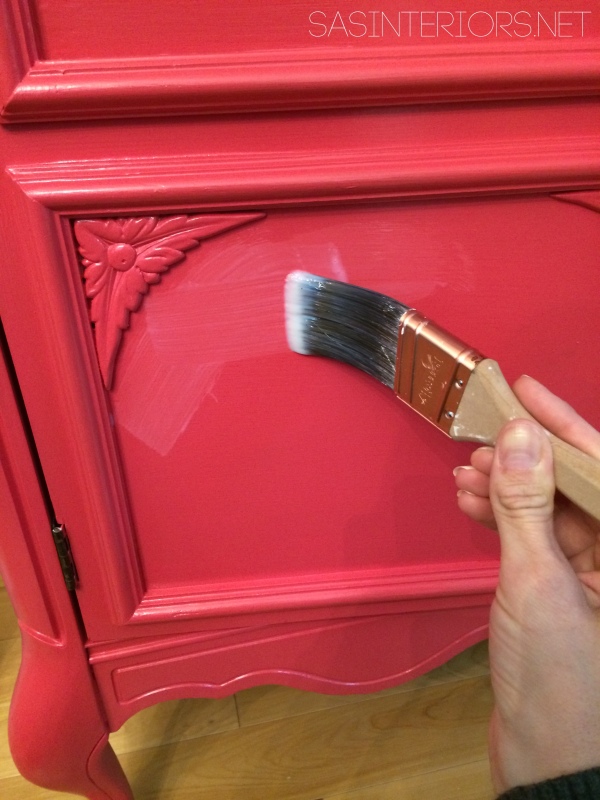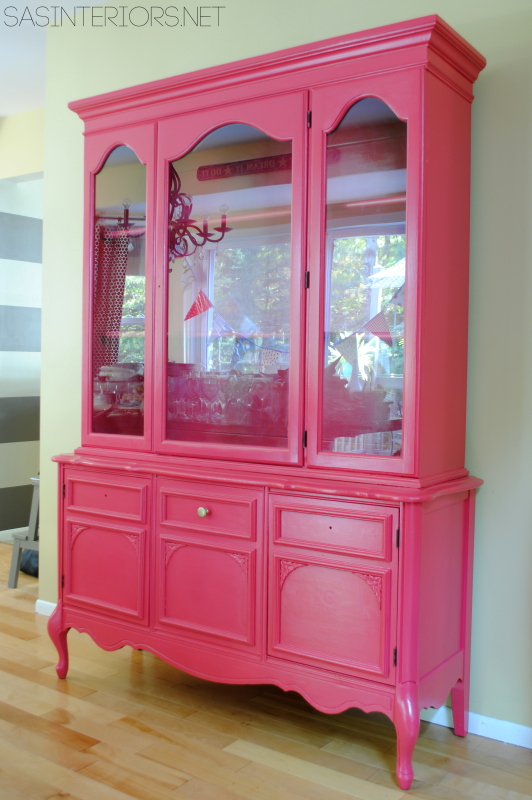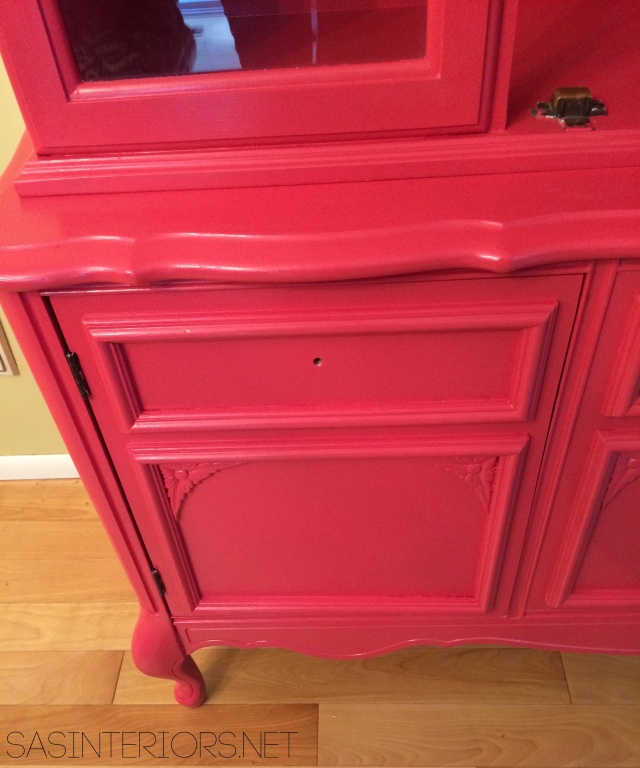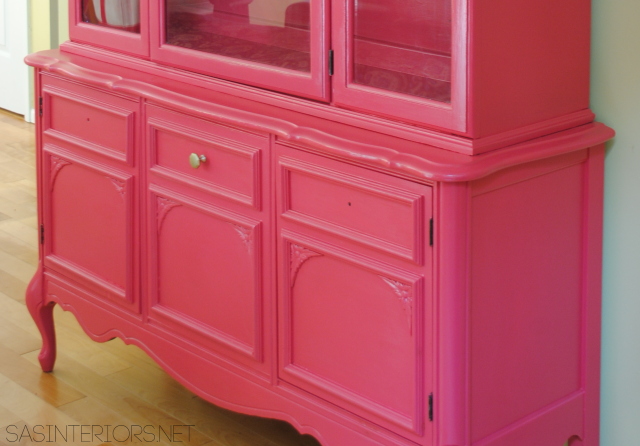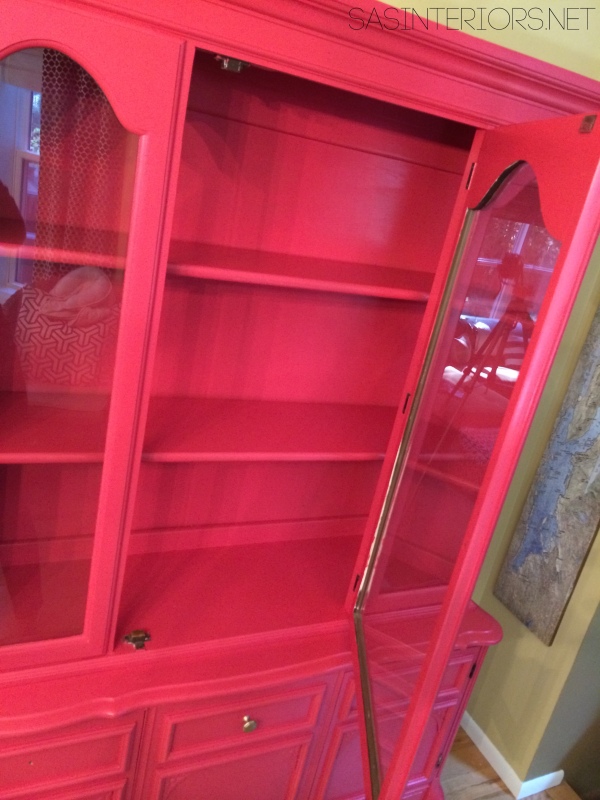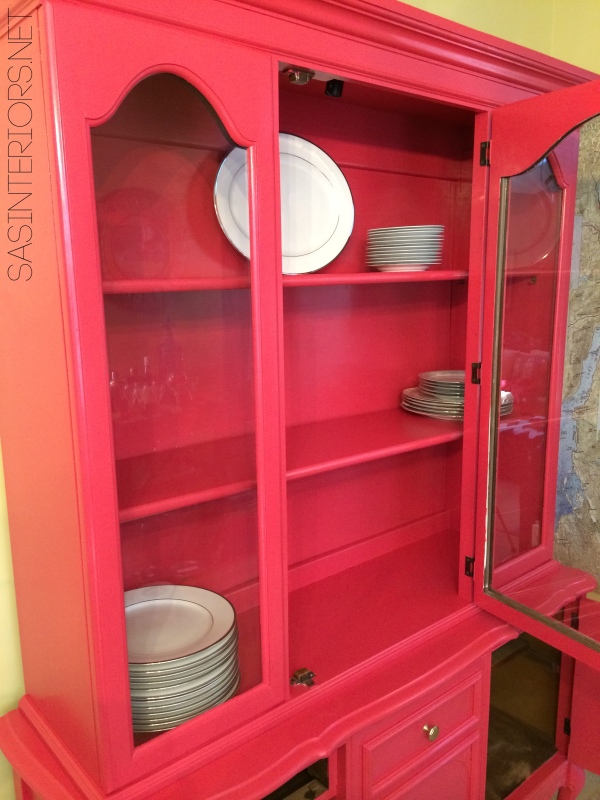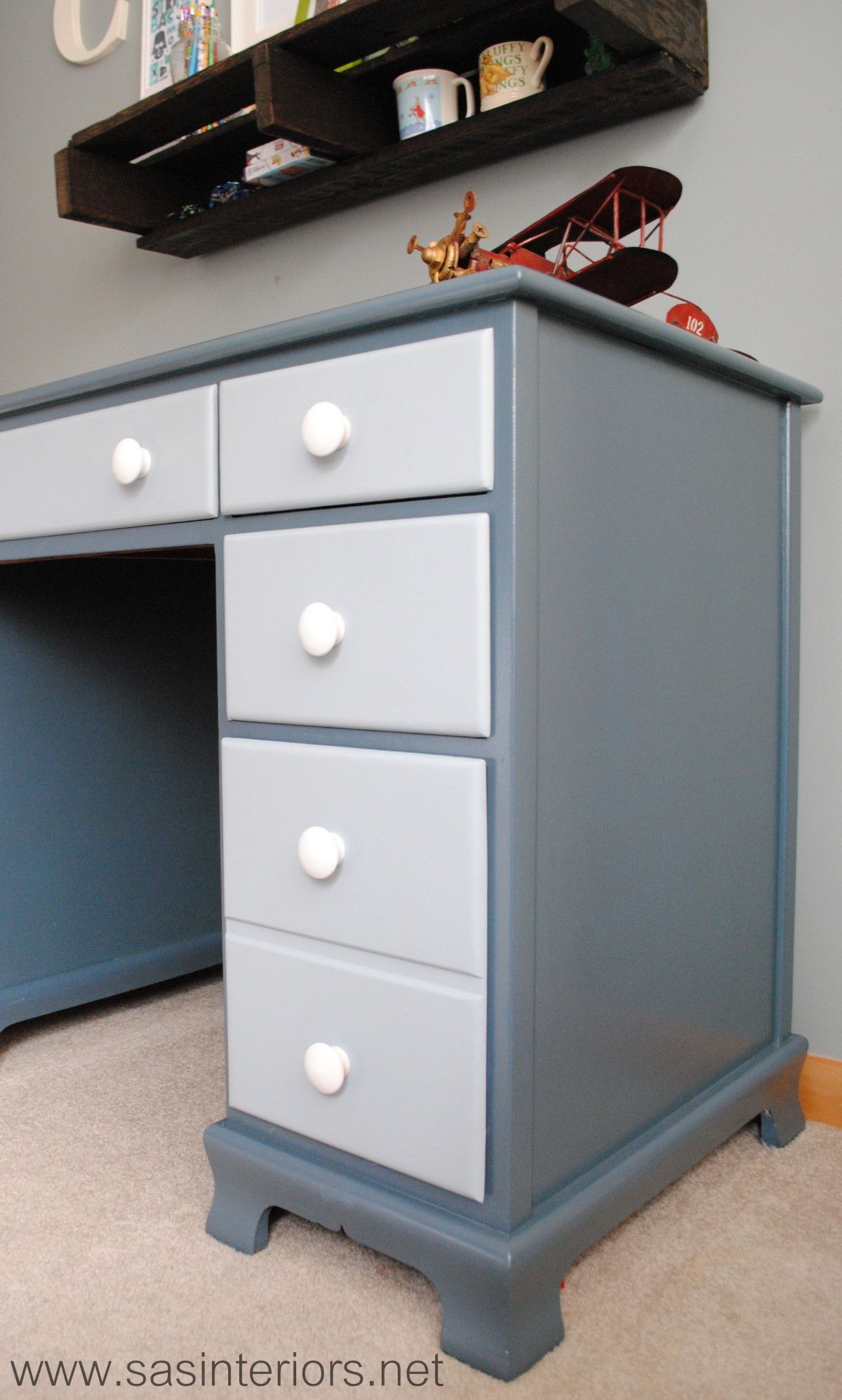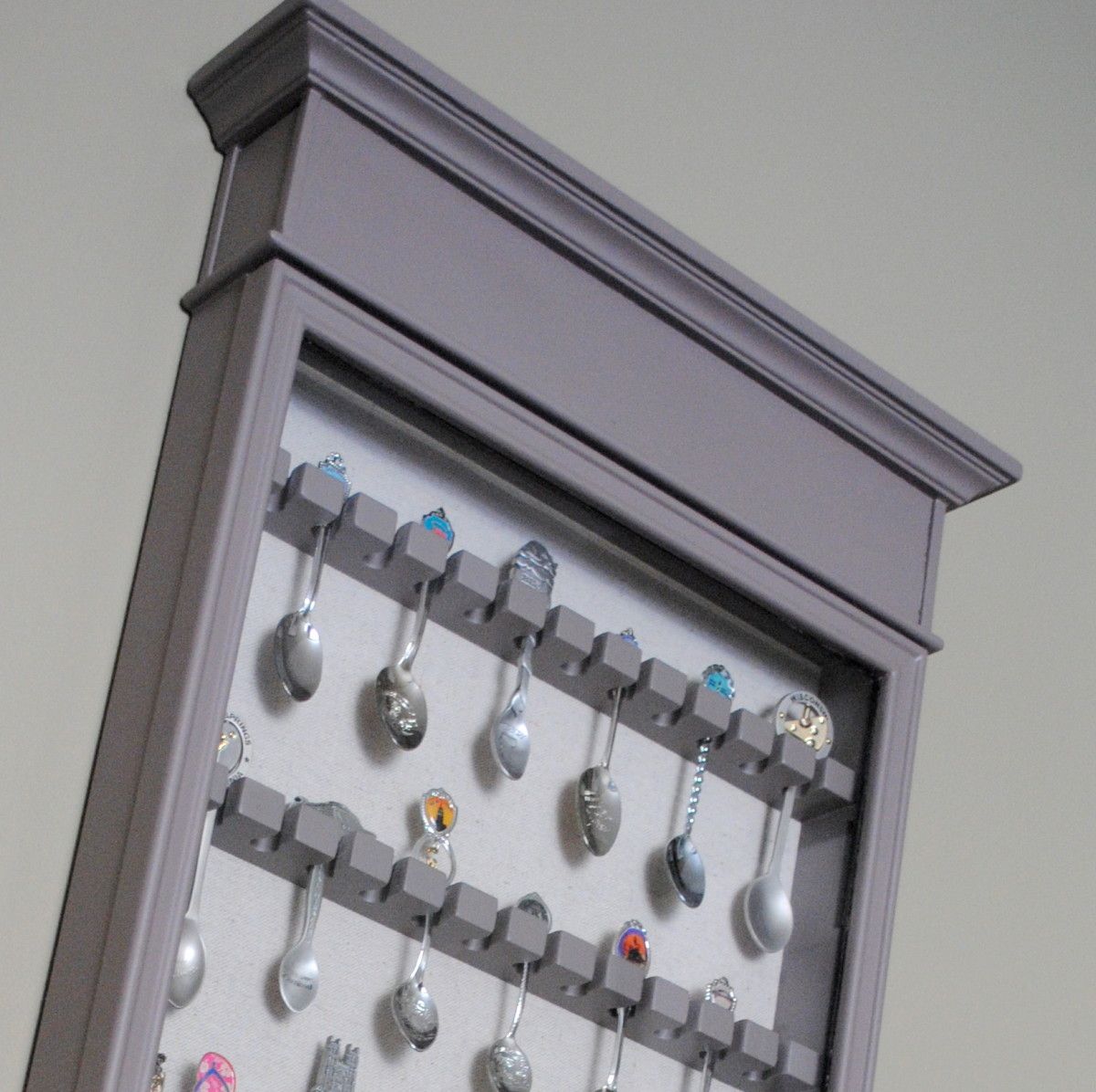China Cabinet Makeover {Reveal}
It’s done! What a journey it’s been for this china cabinet.
Upon finding this diamond-in-the-rough on Craigslist and rescuing it from a dilapidated garage that housed chickens, roosters, and a few other unknown animals (I was afraid to even look around), the once trash-bound cabinet now sits beautifully in my dining room with a vibrant new color & a complete designer makeover…
It has been quite the task of getting her to this point, but she’s complete!
We can’t appreciate the ‘after’ without looking at the ‘before’. Remember what she looked like a few short weeks ago…
>>> read more on The Backstory + Choosing a Color <<<
Like I said, it’s been quite a journey. Let’s reminisce…
I was psyched to bring her home. Once she landed in our garage, I started the prep work by removing all the hardware, the doors, and the shelves.
I cleaned her up a bit + lightly sanded all the surfaces.
>>> read more on Prep + Sanding Wood Furniture <<<
Once all the surfaces were ready, it was time to prime! As I’ve shared over & over, priming is SO IMPORTANT. The purpose of paint is to provide color, but the purpose of primer is to provide the ideal base for the paint to be applied. The paint + primer in one is fine for walls, but a true primer like Glidden Gripper (which is what I used) will block the stain from bleeding through and will provide the needed base for the paint to adhere! If you’re painting furniture, YOU MUST USE PRIMER.
>>> read more on Why & How-To Prime Wood Furniture <<<
After the key step of priming all the surfaces, it was time to PAINT! Finally, right?! I chose the color Red Red Rose by Glidden using the Glidden’s new simplified color palette. This is a real wow-factor color and even before finding the china cabinet, I knew this rosy, raspberry hue would be perfection. Typically I have the piece before choosing the color, but not in this case. The other hues + layers in the dining space are fairly minimal and neutral, so I knew a focal point piece that would be the eye-catcher of the room would make a real impact. It’s all about the contrast and the balance between neutrals and bolds.
This is a real wow-factor color and even before finding the china cabinet, I knew this rosy, raspberry hue would be perfection. Typically I have the piece before choosing the color, but not in this case. The other hues + layers in the dining space are fairly minimal and neutral, so I knew a focal point piece that would be the eye-catcher of the room would make a real impact. It’s all about the contrast and the balance between neutrals and bolds.
The process of painting this beauty was laborious, but O So Worth the time + effort!
>>> read more on How-To Paint Wood Furniture <<<
Once the china cabinet was painted & sealed, I wanted to add a few fun, unexpected details. I chose to add self-adhesive, contact paper to the back of the cabinet interior which provided a beautiful backdrop for all my dishes, platters, and china.
When I couldn’t find the exact hardware I had envisioned, I DIYed it to create exactly what I wanted at a fraction of the cost.
Once the jewels hardware was set, it was time to style this gorgeous gal!
It’s now all filled up with our collected plates, glasses, and platters… Believe me, not one new thing was bought for this revamped beauty.
>>> read more on the Details + Hardware + Styling <<<
a recap of the process…
And then she was complete!
The ‘after’…
Let’s compare one more time…
What do you think? Pretty major change, right?!
Thank you so much for following along on this Tale of a China Cabinet Makeover! I’ve received countless emails, comments, and messages on how the multiple posts and step-by-step breakdown of the process has been an inspiration. From your notes, it sounds like many of you have had the urge to paint that piece of furniture but either didn’t know how, weren’t sure of the process, or didn’t have the inspiration needed to get started. I hope I’ve pushed you enough to make the move!
Here are the many posts related to this before and after
Backstory + Choosing a Color
Prepping & Sanding Wood Furniture
Why & How to Prime Wood Furniture
Tips + Tricks to Painting Wood Furniture
Accessories, Details, & Styling {China Cabinet Makeover}
China Cabinet Makeover {Reveal}
This post is sponsored by Glidden paint, but all thoughts and opinions are 100% my own. I am so excited about this project & was thrilled to partner with Glidden paint on this furniture makeover.
